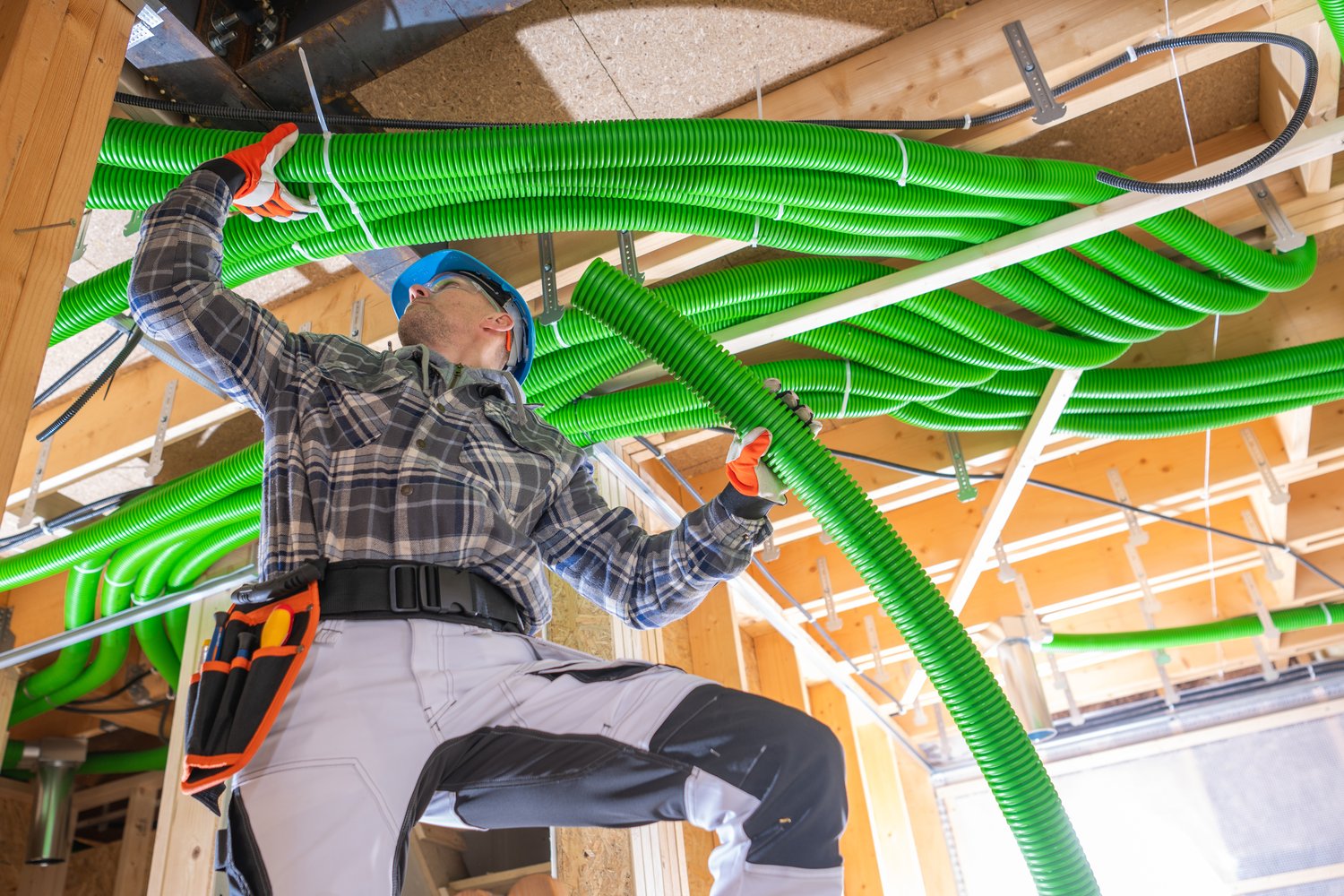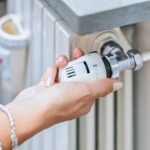Imagine transforming your home into a seamless, interconnected environment where lights, climate, and security systems respond to your commands or even predict your needs. The good news? Smart home electrical wiring is at the core of making this a reality. As an essential foundation for home automation systems, it offers unparalleled convenience, energy efficiency, and enhanced security. This guide reveals the intricacies of smart wiring installation, empowering you to harness the full potential of automated living.
- Discover why smart home electrical wiring is crucial for achieving a fully automated, responsive living space.
- Understand the key components like smart hubs and connectors that form the backbone of effective smart wiring systems.
- Learn how to design a smart wiring infrastructure that seamlessly integrates with your home’s layout and technology needs.
- Gain insight into troubleshooting common issues and maintaining your smart home system for optimal performance.
By delving into this guide, you’ll equip yourself with the knowledge to elevate your home’s functionality and efficiency, opening up a world of possibilities in smart living. This exploration not only simplifies the installation process but also inspires innovative applications of smart technology in your everyday life.
Understanding Smart Home Electrical Wiring in Automation System Installation Guide
Smart home electrical wiring is a crucial element in the seamless functionality and efficiency of modern home automation systems. By integrating smart technology into your home’s electrical infrastructure, you can control lighting, heating, security, and other systems remotely. This integration not only enhances the convenience of managing various home systems but also significantly improves energy efficiency.
The adoption of smart home wiring solutions is becoming increasingly important as homeowners seek to future-proof their living spaces. Properly installed smart wiring ensures that all devices communicate effectively, reducing the risk of system failures and inefficiencies. As the demand for home automation technology continues to grow, understanding the fundamentals of smart home electrical wiring becomes vital for anyone looking to upgrade their home environment.
Incorporating smart wiring into your automation installation plays a key role in supporting advanced features like voice control, smart sensors, and remote access. This setup not only boosts the value of your property but also ensures that you can customize your living space to meet your specific lifestyle needs. It is important to consider the long-term benefits, such as reduced utility costs and enhanced security, that come with well-integrated smart home electrical wiring systems.
Key Components of Smart Wiring Systems
To successfully implement a smart wiring system, certain key components are essential. These components include high-quality cables, connectors, and smart hubs, which act as the central nervous system of your smart home.
Cables: Choosing the right cables is imperative for the reliable performance of your smart devices. Cat5, Cat6, and Cat6a Ethernet cables are popular choices as they support high-speed internet connections and can handle the demands of multiple smart devices.
Connectors: Reliable connectors ensure secure communication between devices and hubs. Connectors play a crucial role in maintaining the integrity of your network by preventing signal loss and interference.
Smart Hubs: A smart hub serves as the brain of your automation system. It connects all your smart devices, allowing them to communicate with each other. Smart hubs can interface with various devices and protocols, making your smart home setup more versatile and easier to manage.
Investing in quality components not only enhances the performance of your smart home wiring system but also ensures longevity and scalability. This approach allows you to add or upgrade devices in the future with minimal hassle, keeping your home up-to-date with technological advancements.
Planning and Designing Your Smart Home Electrical Wiring: Automation System Installation Guide
Before diving into your smart home automation installation, it’s crucial to carefully plan and design the infrastructure of your electrical wiring. Proper planning ensures seamless integration of automation systems and enhances the functionality of your home.
Start by mapping out your home’s layout. Consider the placement of smart devices such as smart lighting, thermostats, and security systems. A strategic design minimizes disruptions and maximizes efficiency.
Next, select the right type of wiring compatible with smart home technology. Opt for high-quality cables that support expanded bandwidth for future upgrades. Cat6 or higher Ethernet cables are often recommended for their ability to handle increased data loads associated with smart devices.
Additionally, assess the electrical needs of each room. Identify locations that require additional power outlets or specialized wiring configurations. This step is critical to accommodate current devices and allow for future additions.
Incorporate smart hubs, which act as the central control point for connected devices. Position these hubs in areas with optimal signal strength to prevent connectivity issues.
The planning stage is also an opportunity to integrate energy-efficient solutions. Consider incorporating energy monitoring systems to track and optimize energy use, contributing to a sustainable and cost-effective smart home.
By investing time in thoughtful planning and design, you can ensure that your smart home electrical wiring supports advanced automation technologies and meets the evolving needs of a modern smart home.
Installation Process of Smart Home Automation Systems
The installation process of smart home automation systems involves several fundamental steps to connect and integrate various smart devices. Follow these key steps for a successful installation.
Begin by executing the wiring plan properly. This includes running cables through walls, ceilings, and floors according to the mapped layout. Ensure all connections are secure to avoid potential pitfalls and errors down the line.
Next, install the smart hubs and connect them to your home’s internet network. Position them in central locations to maximize connectivity with peripheral devices.
Integrate individual smart devices, such as smart lights, thermostats, and security cameras, by connecting them to the smart hubs. Configuration typically involves pairing devices using companion apps or interfaces provided by the manufacturers.
Consider employing smart switches and sockets to expand the functionality of existing electrical systems, allowing for remote control and automation of various appliances within your home.
After all devices are connected, calibrate and test the system for compatibility and performance. Troubleshoot any connectivity issues as you go, ensuring all components function harmoniously.
The installation of smart home automation systems requires attention to detail at every stage. By following a systematic approach, you can create a cohesive and efficient smart home environment that enhances both convenience and energy efficiency.
Troubleshooting and Maintenance in Smart Home Electrical Wiring Systems
Ensuring your smart home automation system operates smoothly requires regular maintenance and troubleshooting. Recognizing common issues can prevent disruptions and prolong the lifespan of your system.
Identifying Common Problems:
Smart home systems often face issues such as connectivity problems, power surges, and faulty wiring. Connectivity problems can arise from weak Wi-Fi signals, leading to unreliable smart device performance. To counteract this, ensure your home Wi-Fi router’s range adequately covers all smart devices.
Power surges can cause system malfunctions, posing a risk to your smart home’s electrical components. It’s advisable to use surge protectors to safeguard your system during power fluctuations. Faulty wiring may result from poor installations or wear over time, affecting device functionality.
Effective Maintenance Tips:
Regular maintenance is crucial. Conduct periodic checks on all connectors and cables to detect any physical damage or signs of wear. Clean devices to prevent dust buildup, which can interfere with performance.
Frequently update your system’s software to leverage improved security features and functionalities. Manufacturers regularly release firmware upgrades to enhance performance and address vulnerabilities. Ensuring your system remains current with these updates can help optimize its operation.
Optimizing System Performance:
To sustain high performance, minimize interference by positioning devices away from metal objects and walls that impede signal strength. Maintaining a well-ventilated environment around your devices helps prevent overheating, which can compromise system efficiency.
For more critical problems, consider consulting a professional electrician specializing in smart home systems. Professional evaluations can identify potential hazards and offer tailored solutions, ensuring your smart home automation system remains robust and efficient.
By systematically addressing troubleshooting and maintenance, you ensure a seamlessly integrated smart home experience. This proactive approach enhances your home’s smart capabilities and contributes to its operational longevity.
Frequently Asked Questions about Smart Home Electrical Wiring
What is smart home electrical wiring?
Smart home electrical wiring integrates traditional electrical systems with automation technology to enable remote control and monitoring of devices.
What components are needed for smart wiring?
Essential components include smart hubs, smart switches, connectors, and compatible wiring.
How do I start planning a smart home wiring installation?
Begin by assessing your home’s current electrical layout and consult professionals to design a plan that incorporates smart technology.
What are the initial steps in the installation process?
The installation starts with detailed planning, followed by installing wiring and integrating smart devices.
How can I troubleshoot smart home wiring issues?
Check device connections, ensure firmware is updated, and verify your network settings.
What maintenance does a smart home wiring system require?
Regularly inspect connections, update device firmware, and monitor system performance to ensure efficiency.





